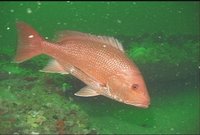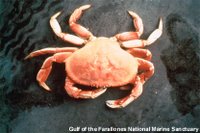 Who will argue with an 800 lb grizzly bear about a fish?
Who will argue with an 800 lb grizzly bear about a fish?Fishery management is working better in Alaska than most places, because people come second. That's common sense in Alaska where you might be arguing with a bear.
To paraphrase Alaska Senator Ted Stevens, regarding the law that bears his name (the Magnuson-Stevens Fishery Conservation and Management Act): it's not designed to protect fishermen, it's designed to protect resource productivity.
That's why overfishing is illegal in the U.S., and why the needs of fishermen are supposed to come second. In Alaska, where state and federal management do the best job of protecting fish, both fish and fishermen are thriving. Too few fishermen and managers around the U.S. have learned these lessons. Some even want to weaken existing law, so fishermen can persist in the folly of overfishing. Not a good idea, we've seen the disastrous outcome of overfishing far too often.
After a week in Alaska, I certainly won't argue about a fish with any of the bears that I saw. Tweet




 Despite the fearsome name, killer whales seem to be a model for peaceful reconciliation after disagreements.
Despite the fearsome name, killer whales seem to be a model for peaceful reconciliation after disagreements.










